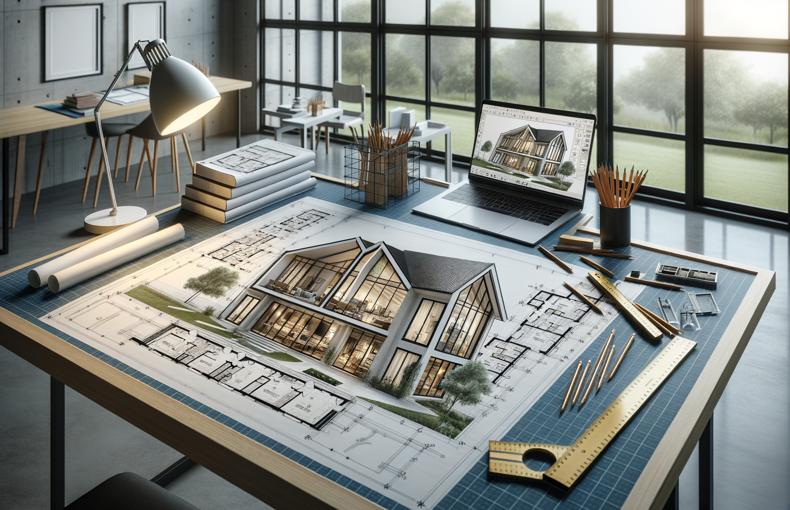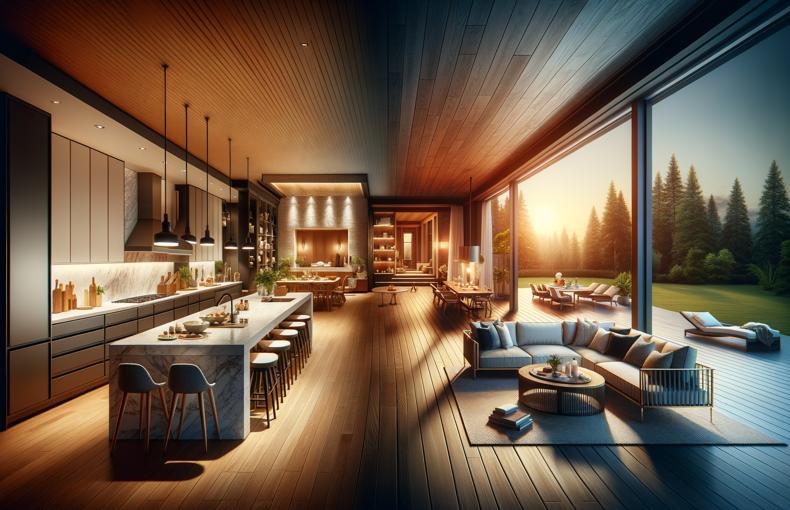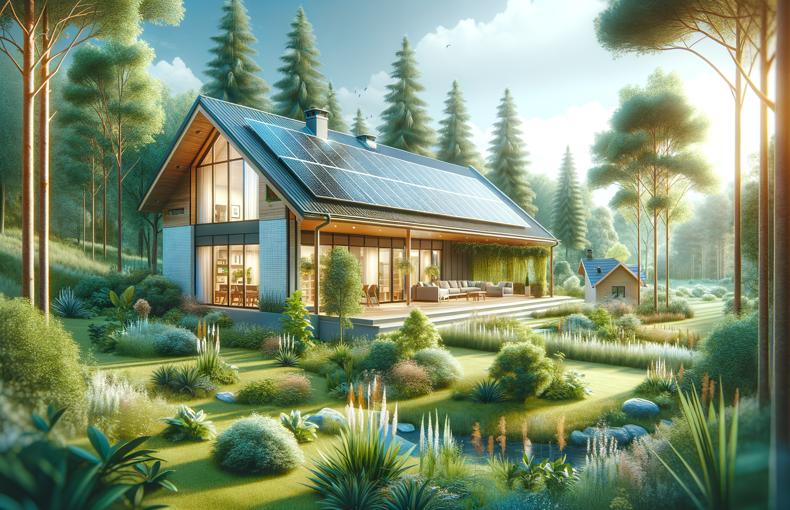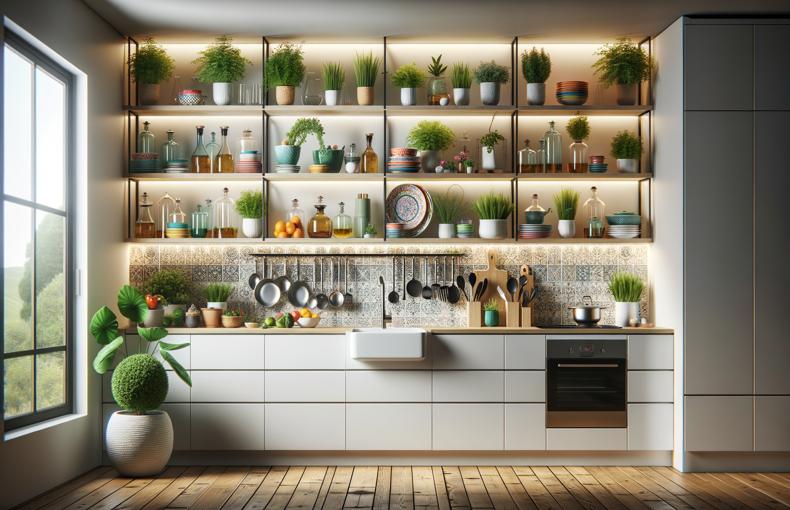Mastering the Art of Custom Home Design: Everything You Need to Know
Designing a custom home is one of the most exciting and rewarding ventures a homeowner can embark on. It's the perfect opportunity to create a living space tailored to your exact needs, lifestyle, and vision. However, the process can be complex, and without the right guidance, overwhelming. In this comprehensive guide, we'll break down everything you need to know to master the art of custom home design, ensuring your dream home becomes a reality.
1. Define Your Vision
The foundation of every great custom home design starts with a clear vision. Consider your current lifestyle, future needs, and design preferences. Are you looking for a modern open floor plan or a more traditional layout? Do you need a home office, space for entertaining, or room for future growth? These initial considerations are crucial to creating a design that reflects both your personality and functional requirements.
- Tip: Create a vision board on platforms like Pinterest or Houzz to gather inspiration. This will help you visualize your style preferences and share them with your architectural drafter or designer.
2. Understand the Importance of Layout and Flow
A well-thought-out layout is the backbone of a functional home. Consider the flow of movement throughout the space. Rooms should connect logically, providing convenience and comfort. For example, the kitchen should be near the dining room, and bedrooms should offer privacy away from communal areas.
Think about how you’ll use each space. Will your family gather in the kitchen every evening? Do you need quiet zones for relaxation and work? Flow and functionality should guide the layout design.
3. Prioritize Energy Efficiency
Incorporating energy-efficient design elements is a smart investment that will pay off in the long run. From choosing energy-efficient windows and doors to utilizing proper insulation and eco-friendly building materials, sustainability should be a priority in modern home design.
Additionally, consider installing solar panels, energy-efficient appliances, and smart home technology that allows you to control heating, cooling, and lighting from your smartphone. These energy-efficient decisions will help reduce utility costs and decrease your home's environmental impact.
- Tip: Look into energy-saving certifications like Energy Star to guide your appliance and material choices.
4. Choose the Right Materials
Materials play a critical role in both the aesthetic and functionality of your home. Each material should be carefully selected based on durability, maintenance, and cost. From flooring and countertops to siding and roofing, your choices should reflect both your style and practical needs.
For example, if you have a busy household, opting for durable flooring like hardwood or luxury vinyl can be more suitable than carpet. Similarly, quartz countertops might be a better choice for families who need low-maintenance, long-lasting surfaces.
5. Consider Future-Proofing
Your custom home should grow with you. Think ahead to ensure your home can adapt to future changes in your family’s needs. This could include adding flexible spaces like bonus rooms that can serve as a home office today and a guest bedroom later.
Future-proofing might also include design features like wider doorways and step-free entrances to accommodate aging-in-place or potential mobility issues. It’s important to think long-term when designing your home, ensuring it’s both functional and adaptable for years to come.
6. Work with a Professional Architectural Drafter
Even with the best ideas and plans, your custom home project will need the expertise of a professional architectural drafter. They will help translate your vision into detailed blueprints and ensure that all design elements are structurally sound and code-compliant.
Hiring a drafter also allows you to benefit from their knowledge of the latest trends, technologies, and materials. They’ll guide you through the drafting process, working closely with you to finalize every detail and create a home design that perfectly fits your lifestyle.
- External Link: Learn more about the role of architectural drafters.
7. Don’t Forget Outdoor Spaces
Outdoor living areas are just as important as your home's interior. Think about how you want to use your outdoor spaces. Do you envision a spacious deck for hosting gatherings or a cozy patio for relaxing evenings? Gardens, swimming pools, outdoor kitchens, and play areas are all popular features that can elevate your outdoor living experience.
Planning the landscaping and exterior features early on in the design process will ensure your home blends seamlessly with its surroundings, enhancing both curb appeal and functionality.
8. Stay Involved Throughout the Process
Designing a custom home requires collaboration and communication. Stay engaged throughout the process, from the initial concept to the final walkthrough. Ask questions, provide feedback, and ensure that the design remains aligned with your vision at every stage.
While professionals handle the technical aspects, your input is invaluable in creating a space that truly feels like home. Regularly checking in on the project’s progress ensures that there are no misunderstandings and that the final product is exactly what you’ve imagined.
- Tip: Schedule regular meetings with your architectural drafter and contractors to stay updated on the project’s progress.
9. Budget Wisely
Budgeting is one of the most important aspects of custom home design. Ensure that you have a realistic budget for not only the construction but also the design, materials, and any unexpected costs that may arise. Work closely with your drafter to prioritize the features that matter most to you and allocate funds accordingly.
Creating a contingency fund can help you cover any unplanned expenses that come up during construction, ensuring that the process goes smoothly without financial surprises.
- External Link: How to create a custom home budget.
Conclusion
Designing a custom home is a fulfilling and exciting journey that allows you to bring your dream living space to life. With careful planning, collaboration, and attention to detail, you can create a home that perfectly fits your lifestyle, future needs, and design aesthetic. By following these tips and working with an experienced architectural drafter, you’ll be well on your way to mastering the art of custom home design.
If you're ready to take the next step in designing your dream home, reach out to a professional architectural drafter who can guide you through the process from start to finish.











